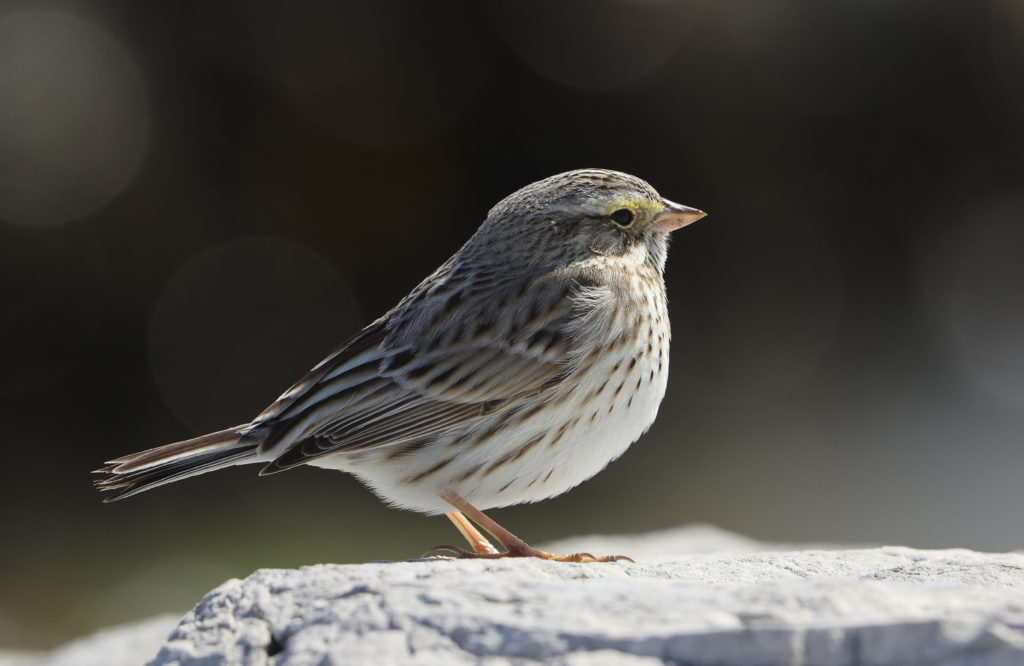Creature Feature

A Unique Coastal Visitor
By Wayne Bierbaum
As I visit the coastal areas of Maryland, I typically look for the large animals that can be seen in the dunes: foxes, horses, hawks, eagles, ducks, and other animals that can be recognized from 100 yards away. Sometimes I cannot help but notice the little birds that scurry around by my feet. One bird that does not seem to be afraid of humans, and has a very unique life cycle, is the Ipswich sparrow.
The Ipswich sparrow is actually a subspecies of the Savannah sparrow (named after where it was first found, Savannah, Ga.). The Ipswich sparrow was first described in 1868 by Charles Maynard from a specimen found at Ipswich Beach in Massachusetts. The bird was much larger and paler than the Savannah sparrow and was thus labeled as a separate species. However, DNA testing has shown it to be a subspecies.
Savannah sparrows have long brownish streaks over their back and chest but the most distinguishing characteristic is a yellow eyebrow. They tend to walk while feeding rather than hop like a song sparrow.
I would think that, logically, the bird should have been named the Sable Island sparrow because that is the only place where they nest and spend the summer. Sable Island is a long thin island in the Atlantic Ocean 190 miles south of Halifax, Nova Scotia. It is about 13 square miles but 23 miles long and the maximum width is three-fourths of a mile. It has a human population of five. The Ipswich sparrow has very strong natal philopatry, which means that they have a drive to return to Sable Island where they were born. Because of that drive, they are geographically isolated.
The Ipswich sparrows return each summer to Sable Island to spend the summer procreating. They have a very high reproductive rate. The females will have two to six young, with a brood every 22 days. The eggs are incubated for 12 days and the hatchlings are ready to leave the nest after around 10 days. The parents may continue to feed the young for another 20 days, which will overlap with the hatching of the next brood.
The female sparrow may have to collect as much as eight times her weight in food a day to feed all the young. Most females have three broods a summer.
In October, they all fly west and spread south along the coastal dunes. They will spend their winter along the Atlantic coast. The males tend to fly farther than the juveniles or females and may end up as far south as the Carolinas. They are more commonly found along the shores of New Jersey, Delaware and Maryland.
In the winter they forage for seeds but in the summer they prefer insects.
The Ipswich sparrow tends to be less afraid of humans than most sparrows and frequently will land in the open rather than diving for cover when approached. Hawks, foxes and cats are the major source of winter predation. Their total population varies a lot from year to year but is estimated to be around 6,000. If you’re at the coast and see a small pale brown with a yellow eyebrow consider how fragile an existence it has.
